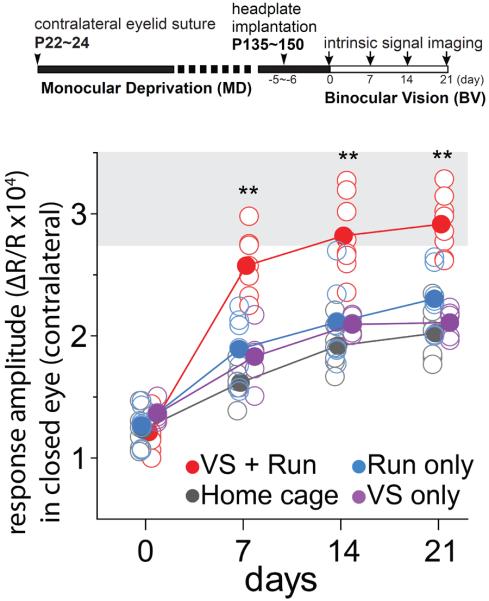Figure 5.
High-contrast visual stimulation during locomotion enhances recovery of visual responses from long-term monocular deprivation. Top. Experimental timeline. Bottom. Amplitude of response to contalateral eye, measured by intrinsic signal imaging, as a functions of time after re-opening following ~5 months of monocular visual deprivation beginning during the critical period. Gray bar indicates the range of response amplitudes in intact mice. Experimental condition (red) with high-contrast visual stimulation during locomotion for 4 hrs/day. Control conditions in the home cage (black), with locomotion 4 hrs/day but no high-contrast visual stimulation (blue), or with 8 hrs/day visual stimulation without locomotion in the home cage (magenta). Data from Kaneko and Stryker, 2014.

